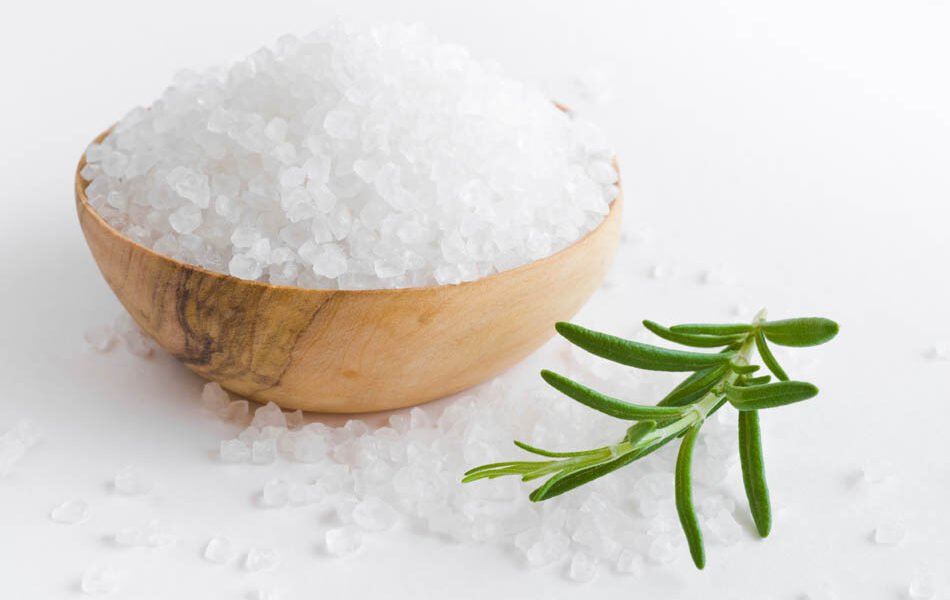Is Salt Bad for Diabetes? Sodium, Hypertension, and Alternatives
Salt makes our food taste better, and many people consume too much of it. The dietary management of diabetes can be complex. How does salt fit into your diet, and does it impact your blood glucose levels?

Excessive salt intake is linked to high blood pressure, but is there an association between salt and diabetes? Do people with diabetes need to limit their sodium intake and watch what they eat to control their blood sugar levels?
If you have diabetes, you have a greater risk of developing heart disease, and maintaining healthy blood pressure is a key component of good cardiovascular health, combined with keeping your cholesterol levels in check.
Let’s take a look at the facts about salt and whether it has an impact on your diabetes management, how much you can consume, and what alternatives are available so that you don’t have to eat bland, boring food.
Is Salt Bad for Diabetes?
Salt is not bad for diabetes if you are only concerned about blood sugar control. However, people with diabetes are at increased risk of cardiovascular disease.
Sodium intake is known to raise blood pressure not only in those with diabetes. Therefore, too much salt must be avoided to prevent cardiovascular complications such as stroke and heart attacks.
Salt intake can easily exceed recommended limits if you are in the habit of flavoring your meals with table salt during and after cooking. When you are watching your salt intake, you must try not to add salt to meals, especially convenience meals and takeout, because they already contain high levels of salt.
Does Salt Affect Blood Sugar?
Salt intake doesn’t directly affect blood sugar. Its official chemical name is sodium chloride, consisting of only these two elements. It doesn’t contain calories in any form, and it is not a stimulant. Therefore, it will not raise your sugar levels.
However, scientific evidence indicates that a high sodium intake may cause insulin resistance and impaired glucose tolerance, increasing your risk of type 2 diabetes.
Studies also show that the consumption of high-sodium foods may contribute to leptin resistance and metabolic syndrome, risk factors associated with the development of obesity and type 2 diabetes.
Since people with diabetes frequently have high blood pressure and heart disease, they must be mindful of their salt consumption. Eating too many convenience foods and adding salt to their meals could result in a spike in blood pressure.
One of the reasons hypertension is commonly associated with diabetes is that high levels of insulin in response to raised sugar levels have been shown to cause sodium retention. Therefore, less sodium is excreted by the kidneys, and it remains in the bloodstream.
Salt Nutritional Value per 100g
Table salt offers no nutritional value in the form of carbohydrates, protein, and fat. However, since it is a chemical compound consisting of sodium and chlorine, it contributes to your intake of these two important elements.
Every time you pick up the salt shaker to enhance the flavor of your food, you increase the amount of sodium consumed. Small amounts are necessary to ensure healthy nerve and muscle function and to maintain the body’s fluid balance.
Salt Nutritional Value per 100g

Salt Glycemic Index
Unlike carbohydrate foods such as bread, breakfast cereals, whole grains, and sweet potatoes, salt does not provide the body with glucose, so it does not have a glycemic index.
While salt does not raise blood glucose levels, it must be limited in a healthy eating plan for people with diabetes. High sodium diets have been linked to insulin resistance and may be associated with undiagnosed type 2 diabetes.
How Much Sodium Can a Person With Diabetes Have?
The recommended limit for sodium intake is 2,300mg per day, equivalent to 1 teaspoon of salt.
Many people underestimate their salt intake, thinking that table salt is the only source of this condiment in their diet. When you eat a lot of processed foods, prepared foods, canned foods such as baked beans, and sauces like soy sauce, you are inadvertently eating a high-sodium diet.
Such foods combined with added salt and naturally occurring salt quickly add up. Everybody, especially people with diabetes, must be aware of how much salt they consume.
Too much salt is one of the risk factors associated with high blood pressure, heart disease, and kidney disease. That being the case, people with type 2 diabetes must learn to understand the nutrition facts on food labels to identify high-sodium foods.
Can You Get Diabetes From Salt?
Yes, too much salt can cause diabetes. Salt intake is not only a risk factor for the development of raised blood pressure, but it has also been associated with an increased risk of developing diabetes.
A case-controlled study examined the causes of diabetes in 234 patients with a confirmed diagnosis of diabetes compared to 468 people who did not have diabetes. Among the identified risk factors was salt consumption. Those who habitually added salt to prepared meals were more likely to develop diabetes.
Salt Substitute for Diabetes
Reducing your sodium intake begins with the salt shaker. Typically the salt you eat is sodium chloride. However, there are potassium chloride salt substitutes available that you can use instead.
A study published in The New England Journal of Medicine in 2021 examined the impact of using salt substitutes on the incidence of cardiovascular events related to elevated blood pressure. The researchers concluded that replacing regular salt with low sodium salt reduced the incidence of stroke, heart attack, and death.
There are other tasty ways of reducing how much salt you consume. For example, you can use spices such as turmeric, herbs, lemon, vinegar, onion, and garlic to add a depth of flavor to your meals, reducing the amount of added salt.
Food labels can help make you aware of your salt intake. It might surprise you to see how much salt is used to make bread and breakfast cereals.
A Word From Our Nutritionist
The relationship between salt and diabetes is not well recognized, even though studies show that a high salt intake may cause insulin resistance, a known risk factor for diabetes.
However, there is a strong link between diabetes, sodium intake, and blood pressure. People with type 2 diabetes have a higher risk of developing hypertension and other forms of cardiovascular disease.
A low-sodium diet is recommended to help reduce heart disease risk. Salt substitutes are useful for people who enjoy the taste of salt. Additionally, to reduce sodium consumption, those with diabetes must limit their intake of convenience foods, salty snacks like potato chips, sauces such as soy sauce, canned foods like baked beans, fast food, frozen dinners, and processed cheeses.
A diabetes diet is a healthy eating plan that encourages the consumption of fresh, minimally processed foods. It promotes the intake of potassium-rich foods such as fruit and vegetables like leafy greens, tomatoes, and asparagus, which can help lower blood pressure.
Conclusion
The words salt and diabetes are seldom used together. However, even though salt intake doesn’t raise blood glucose levels, it is associated with reduced insulin sensitivity and an increased risk of diabetes.
No matter whether the sodium you consume is naturally occurring in the food you eat, used to manufacture processed foods, or added to your meals at the dinner table, it causes a rise in blood pressure.
If you have diabetes, you have an increased risk of heart disease. Therefore, skipping fast foods and eating a low-sodium diet is vital for better heart health and diabetes management.

- Personalized and diabetes-safe meal plan
- An integrated shopping list that matches the meal plan
- No-equipment home workouts
- All-in-one health and progress tracker
- Detailed activity log

















































 Select your language:
Select your language: 










